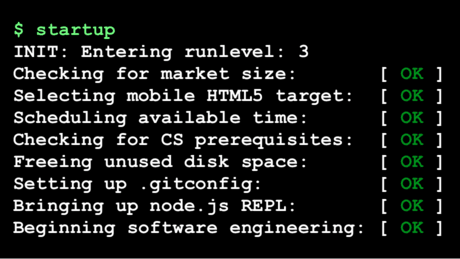GRATIS
University of California, San Diego vía Coursera
GRATISMastering the Software Engineering Interview
Acerca de este curso
- Welcome & What is a Software Engineering Interview?
- Welcome to our course on effectively communicating your technical abilities. This course focuses on landing a technical job and excelling in a technical role. To succeed in job interviews, you’ll need to be able to confidently articulate your ability to solve challenging problems and come up with new solutions under potentially stressful conditions. After getting a technical job, the role of communication increases even more. You’ll need to work with other members of the team, communicate technical challenges and successes, and potentially sell the value of your work to those outside the company. Our goal is that by the end of this course each and every one of you understands the importance of technical communication, and has received constructive feedback on areas of potential improvement. In achieving this goal you will also learn about algorithmic thinking on the fly, how to evaluate a good interview answer to a difficult technical problem, and how “soft” skills impact interview outcomes. In this module, we’ll begin to see what a technical interview looks like, from the perspective of a major tech company. We’ll then focus on how to best get the interview in the first place. If you're not in the job market right now, you might want to skim the videos in this module and skip ahead to the Resume Critique (for insights about how to present yourself in writing) or the Introductions assignment (on effectively presenting yourself in person).
- Welcome & What is a Software Engineering Interview?: Lesson Choices
- Live coding: the technical phone interview and beyond
- Now that you’ve gotten warmed up, it’s time to practice your coding skills. One of the things you’ll almost certainly be asked to do during a technical phone interview is to code up a solution to a problem in a shared text document (e.g. Google doc) while you are on the phone with the interviewer. This experience can be intimidating, unfamiliar and humbling if you are not prepared, so this week we will give you lots of practice and tips for getting through this part of the interview with flying colors.
- Explaining what you've already done
- This week, we’re going to focus on how to speak about your experiences working on projects and how to speak about the technical problems you’ve experienced and how you’ve solved those problems. We’ll introduce the STAR (Situation, Task, Action, Results) model for presenting your work, and discuss how to and how not to present the problem you worked on and the solution you developed. We’ll also discuss the communication skills that are critical to this task. It’s a fun week with lots of examples (both good and bad), which ends with an assignment where you will present your own work on video and submit this video for peer review.
- Explaining what you've already done: Lesson Choices
- Algorithmic thinking on the fly
- As we saw in week 2, coding on the fly can be a difficult task! In this final week of the course we’ll revisit the skill of live problem solving by looking at how to solve more challenging algorithmic problems (and write the code associated with the solution) on the whiteboard. You’ll recognize these problems as “classic” interview problems you’ve probably heard a lot about, designed to test your problem solving skills as well as your analysis and coding abilities. Don’t worry, we’ll teach you how to approach them with confidence through a 6-step process to addressing technical questions (hint: you don’t have to produce the perfect solution on the first try!). We’ll show you how to use this process in a number of examples. But of course, there is no substitute for practice, so we’ll set you up with how to train and evaluate yourself.
Cursos relacionados

GRATIS Aprendiendo a aprender: Poderosas herramientas mentales…
Deep teaching solutions
Español

GRATIS Programación para todos (Introducción a Python)
University of Michigan
Inglés

GRATIS The Science of Well-Being
Yale
Inglés

GRATIS Negociación exitosa: Estrategias y habilidades esenciales
University of Michigan
Inglés

GRATIS Primeros Auxilios Psicológicos (PAP)
Universitat Autónoma de Barcelona
Español


